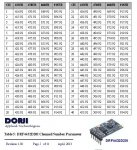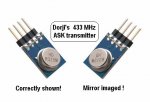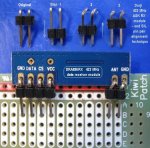Agreed on Dorji's Mark - he's real gentleman,with warm & rapid email responses of "Oxbridge English" calibre!
By chance Mark has just informed me of a sleek new SPI linked SI4463 based
433 MHz DRF4463F modem module that has amazing RX sensitivity & data speed. Yikes - it's only US$6 too ! Their more traditional ~US$20 DRF4463D20, which is itself very new,is reviewed at a recent
DesignSpark posting. Mmm-the poster should be alerted to 433 MHz power levels however, as the normal UK limit is 10mW- he seems to be using 100mW!
Dorji products can be purchased directly from Tindiehttps://www.tindie.com/ , with the
DRF4463D20 here. If you've not heard of this crowd then perhaps
read this. For those with innovative e-projects
Tindie may be just the outlet in fact.
My "copyleft"
review of Dorji's plain ASK modules, is also mentioned (scroll down). These modules apparently sell at just US$8 for 2 x TX and 2 x RX. Even with (modest) p&p this is under half their Wiltronics/Surplustronics prices in Aust/NZ!
Dorji are not perfect however, as their much published 433 (315?)MHz transmitter view is still -sigh- mirror imaged ! At one stage their RX module was too -which must have caused no end of head scratching! I let them know this well over a year back in fact...
Stan.




